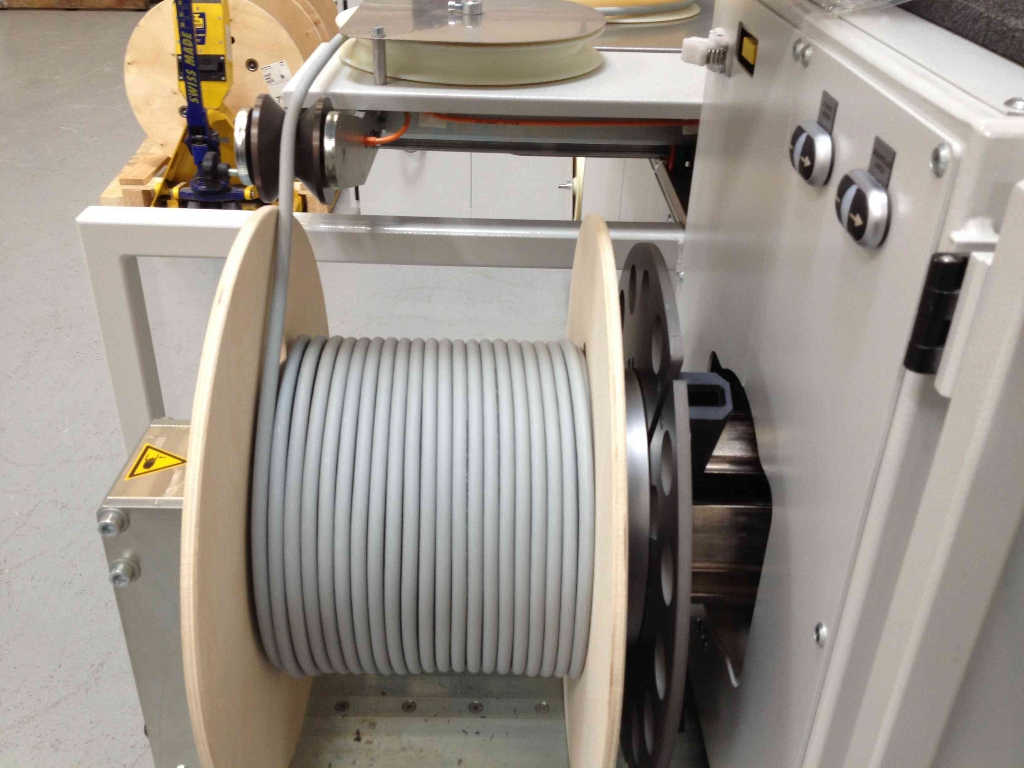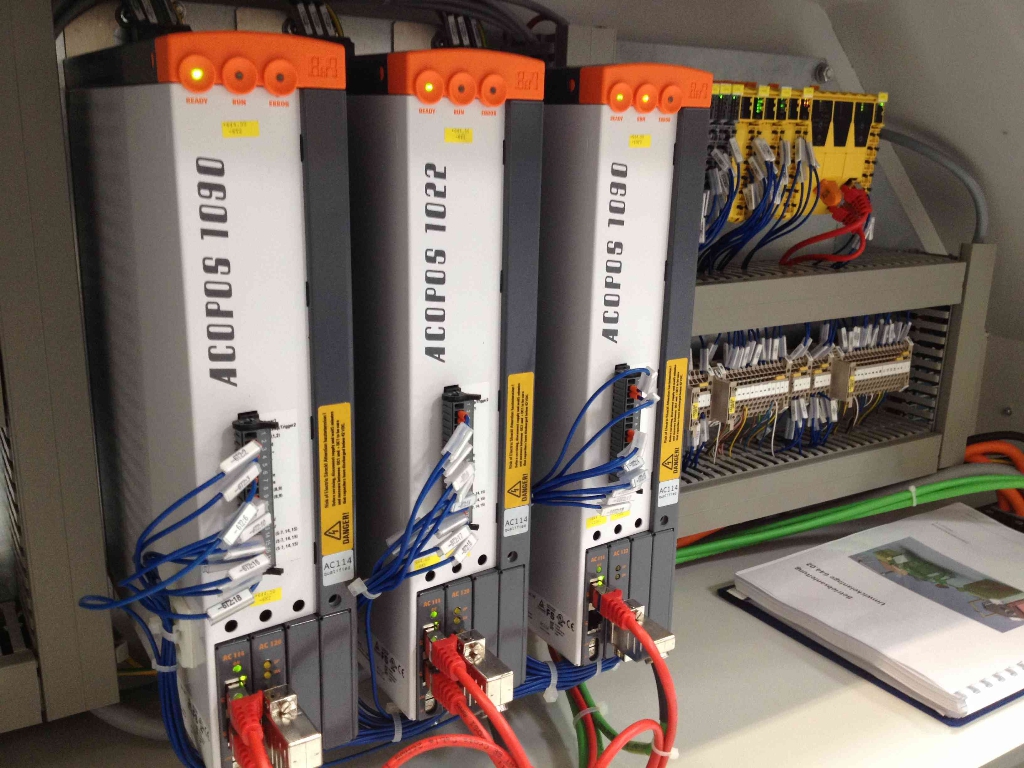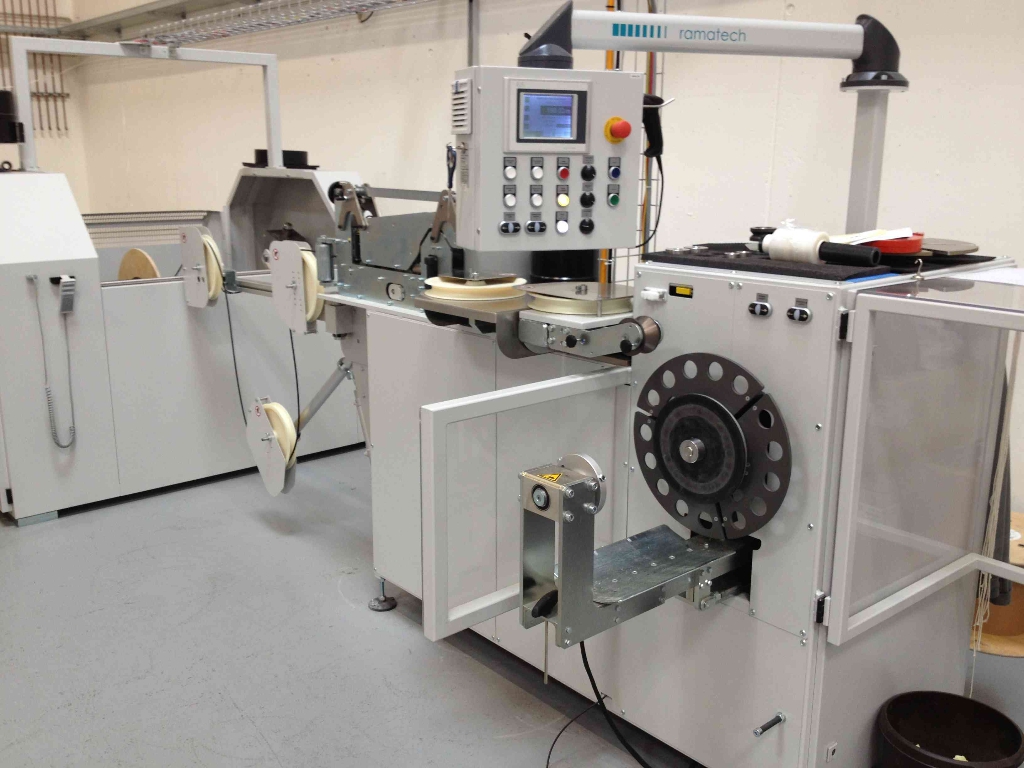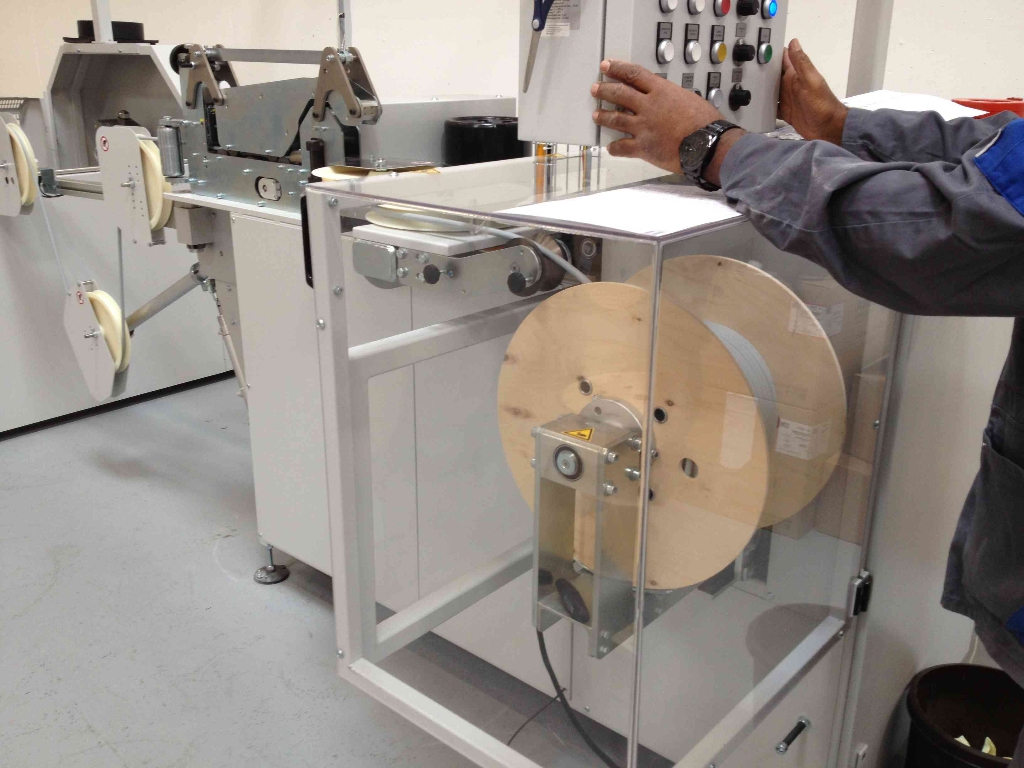Many companies still find themselves manually winding cables onto reels or into coils. The reason? Cables tend to have a mind of their own, and machines have a hard time reacting fast enough to handle the unpredictable dynamics. But now, a leading Swiss manufacturer of cable feeding systems, Ramatech, has developed a system that ensures a perfect wind every time – an accomplishment owed in large part to automation components from B&R.
Cable rewinding is not a high-profile market. An Internet search for industrial cable rewinders produces rather limited results. "It's a market with relatively few competitors," explains Erika Randegger, who founded Ramatech in 1988 together with her husband, Kaspar. With 20 employees, Ramatech is a pioneer in several areas of winding technology. "We lead the market in automatic cable feed systems for processing multipolar cables such as unwinders, reel storage systems and – of course – rewinding systems," says Randegger.

Unwieldy cables
Cable rewinders can be used to transfer cable from large reels to smaller ones, from reels to coils or from large coils to smaller ones. These systems are offered in various dimensions to accommodate reels of all sizes, which can weigh anywhere from 300 to 8,000 kilograms. The basic principle sounds simple enough: unwind it from here and wind it up over there. Yet the reality is much more complex, particularly when precision matters. "Here at Ramatech, we want to optimize the quality of the winding results so that the cables don't come loose," says Timo Kessler, Ramatech's electrical and software engineering manager.


Wound perfectly at 3 meters per second
A well-wound cable is a seal of quality. The cable should be wound as densely as possible with no gaps or overlapping. This level of precision represents the primary challenge for cable winders. Ironically, the main source of frustration is the cable itself. "Cables have a mind of their own," Kessler is convinced.
When a flawless appearance is important, many companies still resort to winding cables by hand. Experienced workers know how to guide the cable and are able to make quick adjustments. With so many companies still relying on manual winding, there is a great deal of market potential for machines that can automate the process with sufficient quality.
That's where Ramatech comes in. Accomplishing a feat that previously required skilled human hands, Ramatech's highly stable machines combine perfectly synchronized drives and countless algorithms to achieve flawless winding – at a speed of 3 meters per second.
Implementing highly complex control loops
To achieve their lofty quality targets, Ramatech's developers work with B&R components. Kessler knows exactly why his company has chosen to work with the Austrian automation specialists and their local team in Frauenfeld, Switzerland. "B&R's servo technology is extremely competitive with regard to both performance and pricing."
The sophisticated B&R components are put to good use in Ramatech's rewinders. Two reels with different diameters are rotated in perfect synchronization as the drives gradually ramp up from 0.1 to 3 meters per second. Once the drives settle at this speed, the controller must continuously execute extremely complex control loops to compensate for the distortions caused by the unpredictability of the cable and oscillations caused by the machine. They must do so, however, without slowing down the process, which needs to maintain the certified speed of 3 meters per second.
When it comes to programming processes of this complexity, small and medium-sized companies can quickly run up against their limits with regard to know-how, time and budget. "One of the big advantages of the B&R components, though, is that even the most complex calculations are very simple to program," says Kessler. The shift from tedious programming to simple parameterization has long been a central theme of working in the Automation Studio engineering environment.
End users: Huber+Suhner
Companies that purchase rewinder systems include cable assemblers, electrical wholesalers and cable manufacturers. The majority of these systems are customized for specific applications, so the most efficient way to build them is by starting with a common base and then solving the wide variety of requirements by adding modular options.
Huber+Suhner is one such customer who has ordered customized machines from Ramatech for their location in Pfäffikon in the Swiss canton of Zürich. They recently installed a reel-to-reel rewinding system featuring a dereeler and rewinder that can each accommodate reels up to 1,260 millimeters in diameter. They also have a second system for reel-to-coil rewinding. The reels can weigh up to 1,000 kilograms. Features of these systems include cable return stops, automatic cable diameter sensing, end of cable detection and cutting units.
In addition to ensuring optimal layering, another important feature of these systems is certified length measurement. "This actually makes it a bit difficult to develop new machines or use new components," explains Kessler, "because the certification is expensive and is valid for ten years. Any alteration – even switching out a single component – requires recertification."
Major upgrade: integrated safety technology
"That's not to say we never make any improvements. For the first time, Huber+Suhner's system now also features B&R's integrated safety technology. That's something new for us," says Kessler. Although the aspect of safety itself is nothing new, previous solutions relied on hardware. "We could have continued with the cheaper option, or we could have found more flexible alternatives for certain components, but with B&R's integrated safety technology we finally have remote access to our safety technology," explains Kessler. "We're known for our perfect service, and we introduced remote maintenance some time ago – so we're very happy that we can incorporate the safety aspect into that as well."
Intelligent, decentralized and integrated safety technology from B&R with extremely short response times opens up a new realm of safety concepts. It contributes substantially to both the flexibility and availability of machinery and equipment by providing safe service and diagnostics, systemwide safe communication and the ability to program machine options instead of hardwiring them.

"B&R's integrated safety technology finally gives us remote access to our safety technology. We're known for our perfect service, and we introduced remote maintenance some time ago – so we're very happy that we can incorporate the safety aspect into that as well." Timo Kessler, Electrical and Software Engineering Manager, Ramatech
When in doubt, better call B&R
Getting up to speed with new components – the way Ramatech did with B&R's integrated safety technology – often comes with its share of obstacles. "While customers do complete the training, they often end up spending a lot of time experimenting around because of something they missed," notes Kessler. That's why he always says: When in doubt, better call B&R. "Calling B&R's drive specialists has always been the quickest and easiest solution to any problem we've had. And by now they're familiar with our products, which makes cooperation that much more efficient."